
There are many ways to heat your space. Heaters, furnaces, and boilers are the top things that come to mind. Heating stoves are not usually the top of the list but they can be an excellent way to warm your home.
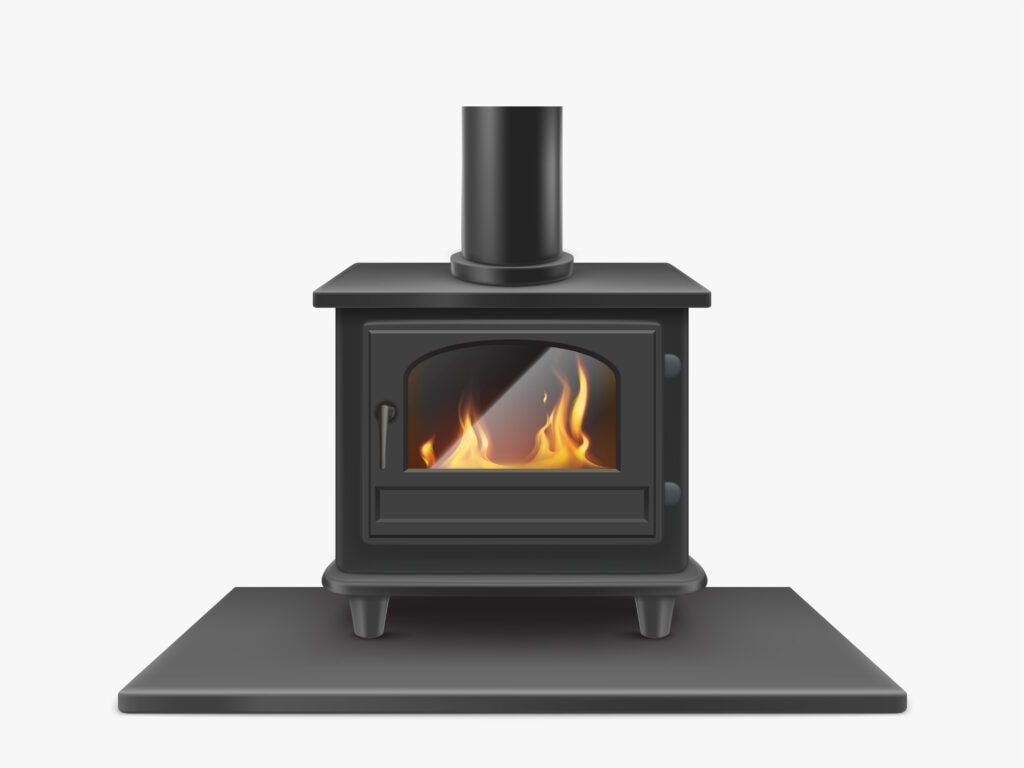
If you want to know more about how these stoves work, what to look for when buying, and the top brands out there, you’ve come to the right place.
Already know exactly what information you are looking for? Use our table of contents to skip ahead.
Stove Basics
We’ve all heard not to use an oven to heat your home but using a heating stove is a different appliance altogether. These are created specifically to provide warmth to the surrounding area in a safe, efficient manner.
What is a Stove?
Heating stoves add a rustic, cozy feel to any room. These use electricity, gas, or wood to produce heat. Modern advancements allow the fuel to burn cleaner than ever and can be a cost-effective way to add heat without the cost or hassle of installing a central heating system.
Heating stoves are free-standing units which are generally vented through a pipe in the ceiling. The burning fuel (or heating element) produces heat that emanates into the room, providing a constant flow of warmth to keep you comfy.
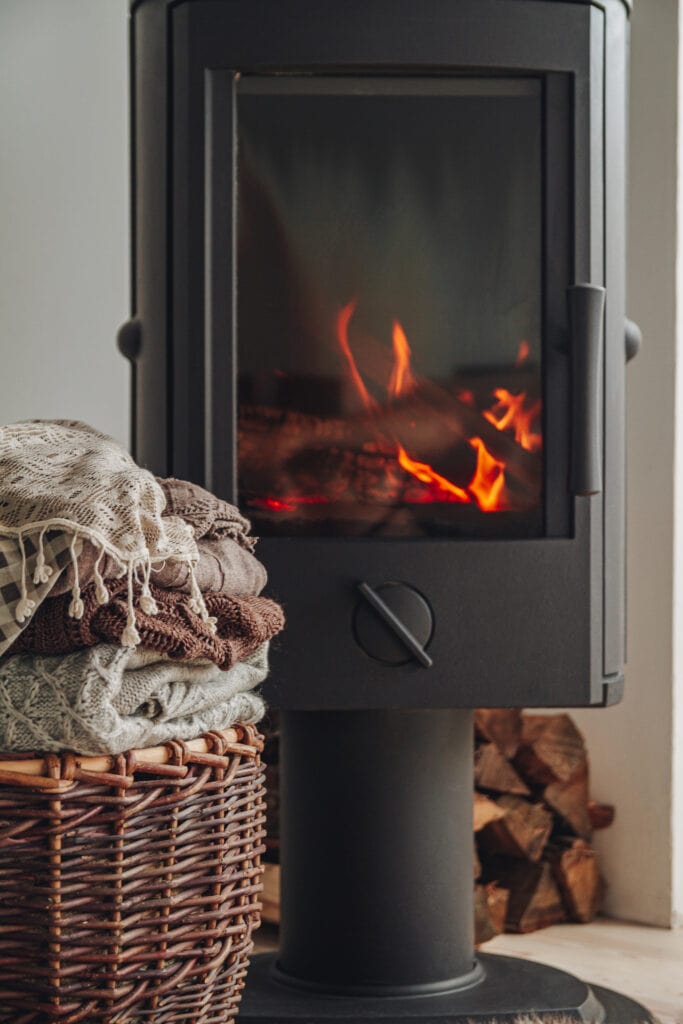
How Does a Stove Work?
Stoves that burn wood or pellets are the most common type. These are loved for the woodsy smell and ambiance they provide. If you are wondering how this process works, keep reading.
● All stoves start with addition of a compatible fuel (through a gas line, auger, electricity, or by hand) into a sealed combustion chamber.
● Air is introduced to the chamber either through a catalytic device or a secondary combustion process that recycles gases to feed the fire.
● Heat from the chamber warms the walls and top of the stove and radiates into the surrounding area. This is called radiant heat.
● Combustion gases created pass through a heat exchanger, turning air polluting gases into additional heat for your stove.
● Oftentimes, fans are also used to circulate the heated air quicker for a wider effect. This distribution of heat is called convection heating.
● The enclosed heating chamber forces residual smoke to rise through a flue pipe where it is vented outside.
● By adjusting a damper control, you control the size of the fire which regulates the heat being produced.
● The processes differ slightly in the various types of stoves. Pellet stoves use components that wood or gas stoves do not. The type of fuel your stove uses will determine the exact method the process uses. However, this was a basic breakdown of what occurs in a stove.
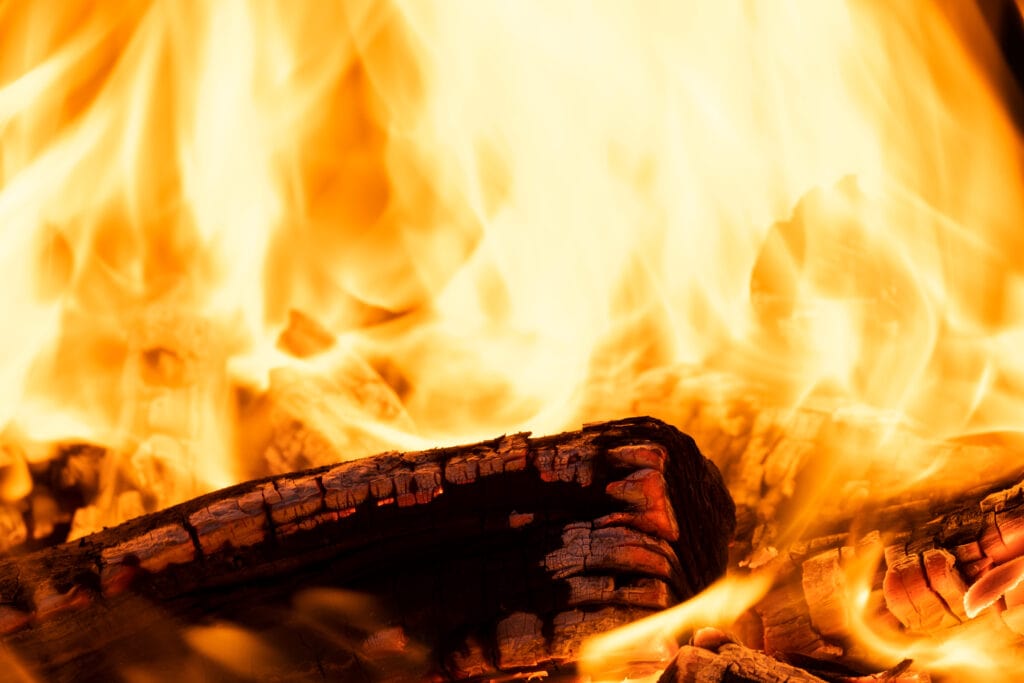
Types of Stoves
There are several categories of stoves on the market. Each has its pros and cons. Some of these stoves do not need any electricity to run while others have electrical components to help them be more efficient.
Gas Stoves
A gas stove uses an existing gas line as the fuel source. These typically need to be vented either through a chimney or flue, although there are options that use a catalytic converter too.
Pellet Stoves
Pellet stoves use pellets made of wood byproducts to fuel the combustion process. These can be loaded into a hopper in large quantities, where they are automatically fed into the chamber as needed. A pellet stove can be programmed using a built-in thermostat and fan to maintain a set temperature in your home.
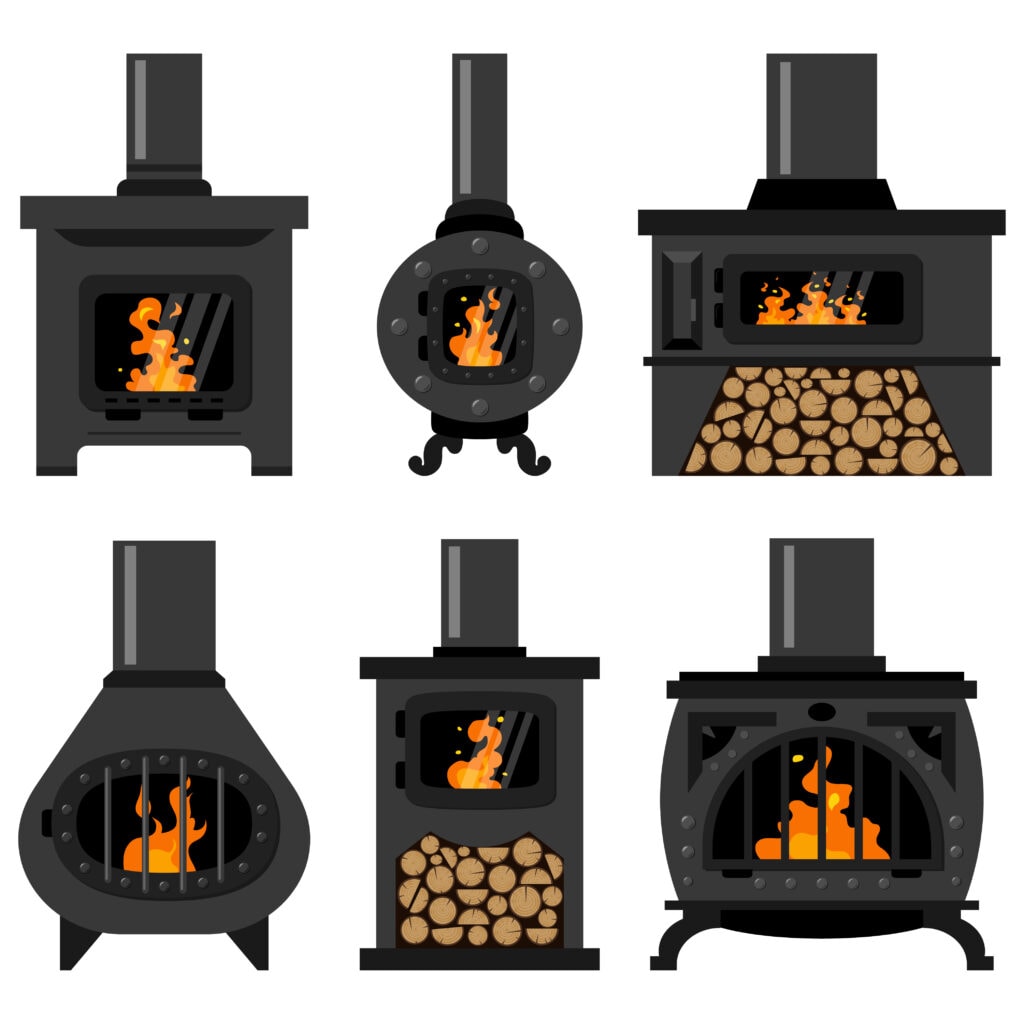
Wood Burning
Wood burning stoves burn wood chips or logs and produce heat in one of two ways.
Catalytic
A catalytic stove uses a process similar to that in a vehicle which reduces the amount of toxic gases released. This type uses a secondary process which utilizes heat in the combustion gases by heating them at a lower temperature. Operating one of these is slightly more difficult due to the need to adjust the amount of air through the use of a damper. This method is also more efficient and better for the environment.
Non-Catalytic
The non-catalytic stove is the most straightforward type of stove. You put the fuel in, it burns inside the firebox, and excess gases and smoke are released through the flue. The only considerations are ensuring proper airflow into the firebox and using good wood.
Here are a few other subtypes of stoves to consider:
● Portable Wood Stoves
● Rear Vented Wood Stoves
● Pellet Stove Inserts
● Small Pellet Stoves
Read Before Buying
If you’ve decided a heating stove is what you need, here are things you need to keep in mind while shopping:
What Size of Stove Do I Need?
Sizing a stove can be tricky. For wood stoves, consider the size of the firebox. This helps determine how much wood it can hold, therefore increasing the amount of heat it can produce.
The next size factor to consider is the amount of BTU you will need. This is determined by the volume (l x w x h) of the space you wish to heat. Then you can find a stove with a sufficient BTU rating.
Stoves are also classified by output size. Small stoves heat up to 500 sq. ft, medium 500-1000 sq. ft, large 1000-2000 sq. ft, and extra-large can heat spaces 2000+ sq. ft.
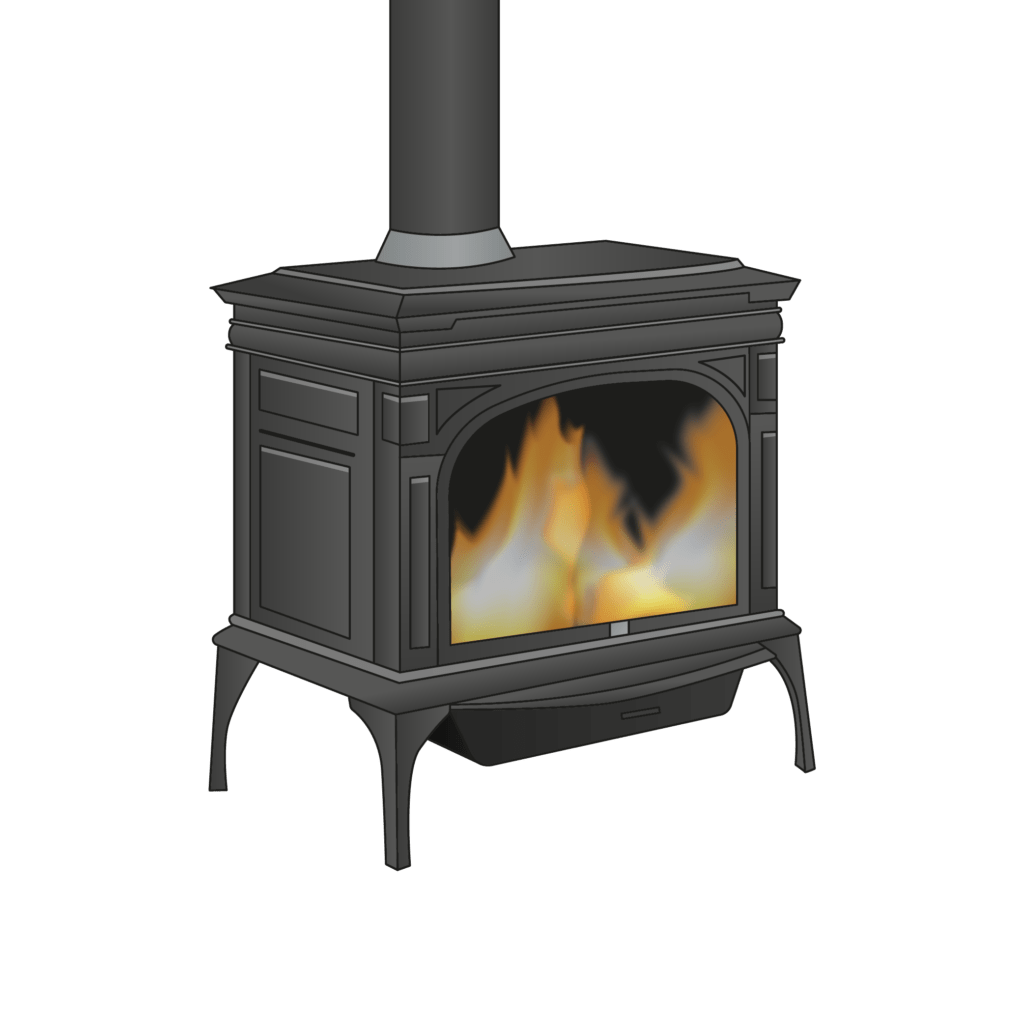
How to Choose a Stove
Now that you have sizing out of the way, you’ll need to consider a few more things.
Position/Orientation
Where will your stove be placed? Placement at one end of a room, with the fan blowing into the largest area is optimal but you’ll need to consider the space constraints and layout of your home to decide.
Fuel Type
Decide which type will be the most cost-effective and convenient for you. Pellet and gas stoves operate automatically while wood stoves require constant feeding and airflow adjustments.
Climate
Some stoves work better in mild climates while others can handle the coldest winters with ease. Be sure to get one that will meet your needs.
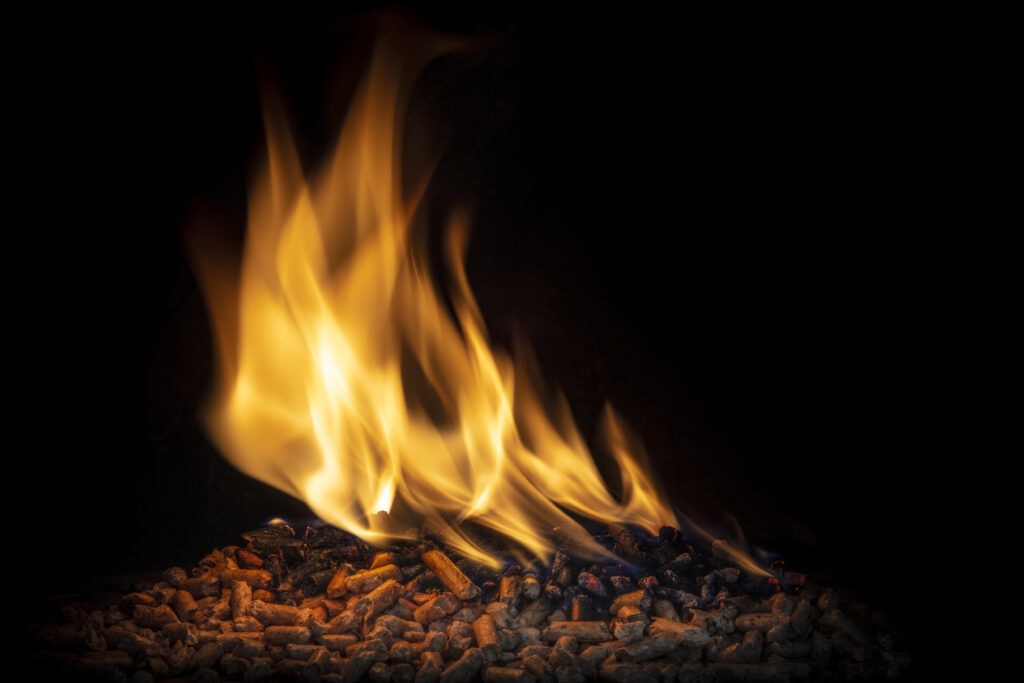
Aesthetic
If you are wanting the ambiance of a visible fire flickering, be sure to get one with a good-sized viewing window. If this is not a consideration, there are stoves without windows at all.
Additional Features
Do you want a remote control, thermostat, or automatic fuel feeder? Decide which features are a “want” and which are a “must-have” and then narrow down the field.
Popular Stove Brands
Many brands produce stoves although some stand out above the pack. Vetting the brand you are looking at will ensure you get a reliable stove that will last a long time.
Going with a well-known brand that focuses solely on stoves increases the likelihood of being able to get support from the company if something isn’t working right. Here are some top stove brands to consider. Click the links to go to our full brand reviews.


Stove Brands
● Ashley Hearth
● Drolet
● Englander
● Hearthstone
● Lopi
● U.S. Stove
● Vermont Castings
Stove Maintenance Tips
No matter what kind of stove you settle on, they will need to be maintained to keep them in optimal operating condition. This will mean regular cleaning and servicing. You also may run into some areas of concern.
Common Stove Issues
When your stove isn’t working right, it can be alarming. Here are some common things you might experience:
My Stove Isn’t Lighting
If your stove isn’t lighting, check the electrical connections if applicable.
Check your fuel – do you have plenty of pellets? Is your wood dry and set up properly? Is the gas line on?
Are you getting enough draft? Sufficient oxygen is necessary for a fire to start so be sure the damper is open and air can flow.
There’s Smoke Coming Out Of My Stove
A smoky room can be caused by many things. Some of the most common are not enough draft (check the flue, cap, or chimney), burning the incorrect type of wood or fuel (learn about the right kind to burn), your house is too airtight (open a window or vent near your stove), or a leaky door gasket (check for loose or damaged gasket).
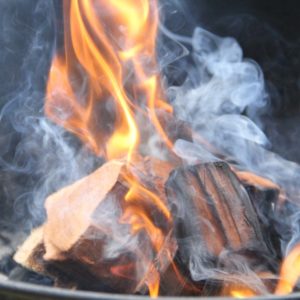
Stove Is Not Burning Properly
This could mean an issue with your fuel. Be sure to use the recommended type of fuel and ensure the proper amount of drafting and oxygen are entering the firebox.
My Stove Looks Dirty
If your stove glass or housing looks dirty, it is likely normal wear and tear from the heating and cooling that occurs. This can also be caused by a fire that burns too hot due to poor quality wood or pellets.
Stove Troubleshooting
If your stove isn’t operating the way you expect, it can be frustrating and possibly create dangerous conditions from smoke or lack of heat. Here are some things to look at if your stove is having issues.
Type Of Fuel
Many sub-par wood and pellets are sold at a low price. This can cause smoking, discoloration, excess ash or soot, and other issues. Be sure to use the recommended fuel for your unit.

Check Your Drafting
Without sufficient air flowing in and through your stove, it will not work right. Be sure your pipe, flue, or chimney are free of obstructions and open and close properly. Also check your damper is fully open.
When Was The Last Time It Was Cleaned?
Soot, creosote, and ash build up over time, so if it has been a while, wait 12 hours to allow the firebox to cool completely, and then do a thorough cleaning. If this isn’t in your wheelhouse, you can call a professional out to do it for you.
Damaged Parts
Examine the parts of your stove. Is anything loose, broken, missing, or damaged? A damaged gasket can allow both air and smoke to leak into the room while a broken damper or flue causes airflow issues.
How to Install a Stove
Installing a stove can be a challenging and technical process. This should be done by a professional but if you’re determined and fairly handy, here are the steps you need to take.
1. Determine Placement
Where will your unit sit? Be sure to read the manual for mandatory clearances and precautions. Move your stove into position and mark out where it will sit. Verify all measurements before marking. Then move the stove out of the way.
2. Add Base and/or Wall Protection
Most people will need to put a heat-proof base under their stove and may need a protective layer on the surrounding walls. This is dependent upon your unit. Check your manual for these requirements.
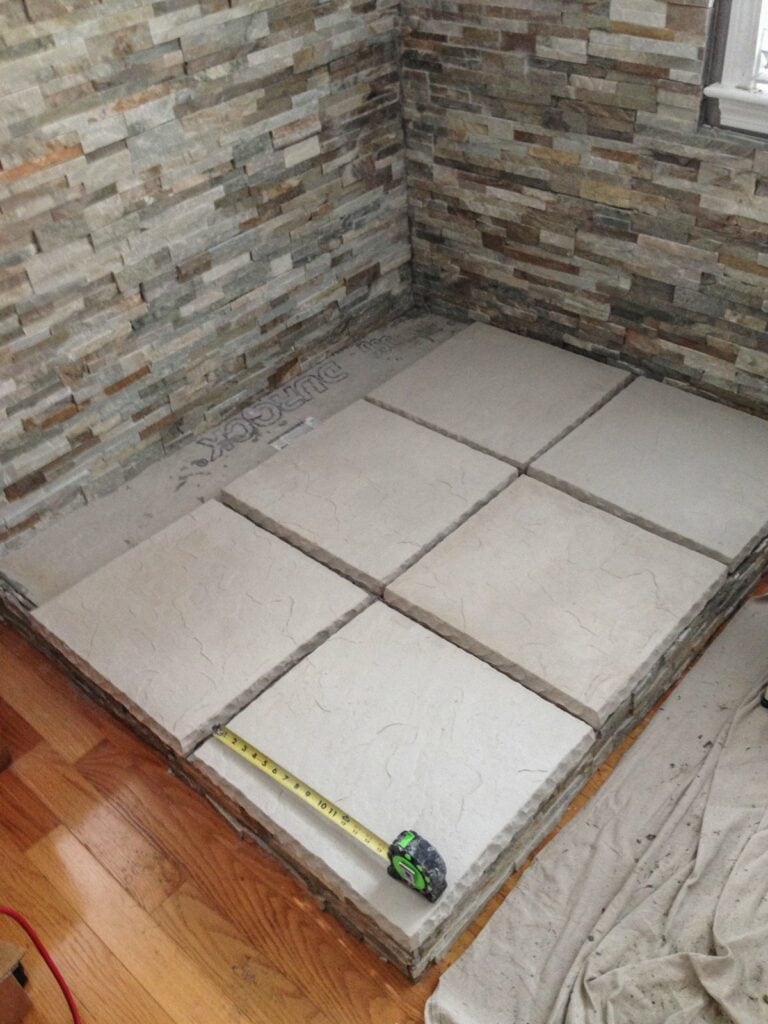
3. Mark the Pilot Hole Position For the Flue
Determine the distance the flue needs to be from the wall and then use that to measure and mark the ceiling or wall where the flue will exit. This must be through an exterior wall or ceiling. (unless you have a ventless model)
4. Cut the Necessary Holes in Wall or Ceiling
This may require several levels of cutting through internal and external walls or through the ceiling and roof.
5. Install Chimney or Flue and Secure
Depending on how your unit will be vented, go to the outer portion of the hole you cut. Install flashing, chimney or flue supports, and/or wall piping. Now, assemble the complete kit and secure connections. You should have a vent pipe running into the room where your stove will reside.
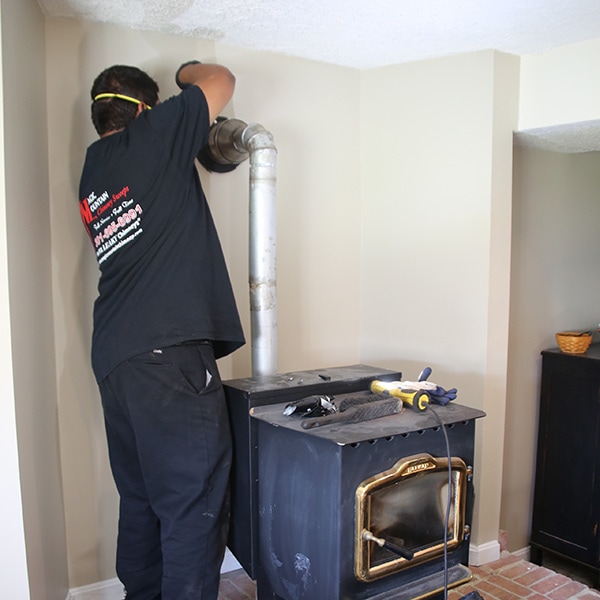
6. Install the Stove
Now you can move your stove back into place and attach all connections. Be sure to tighten all joints and screws.
Once everything is in place, read the owner’s manual for how to start a fire in your new stove. Enjoy!
How to Clean a Stove
Whether you have a pellet stove or a wood-burning stove, the cleaning process will be similar. Wait for the stove to be completely cool to the touch before you begin.
1. Clean the Chimney
Go up to the top of your chimney or flue and remove the cap. Run a wire chimney brush down all the way to your stove to loosen and remove any creosote buildup or debris. This is the best way to prevent fires.
2. Take the Indoor Portion Of the Chimney/Flue Apart
Remove the inside portion piece by piece and examine for damage or build-up. Scrape any debris out with a chimney or stove pipe brush. If you’ve done the chimney sweeping already, there’s likely a mess in here. Be sure to clean all of it out, as it is highly flammable and dangerous.
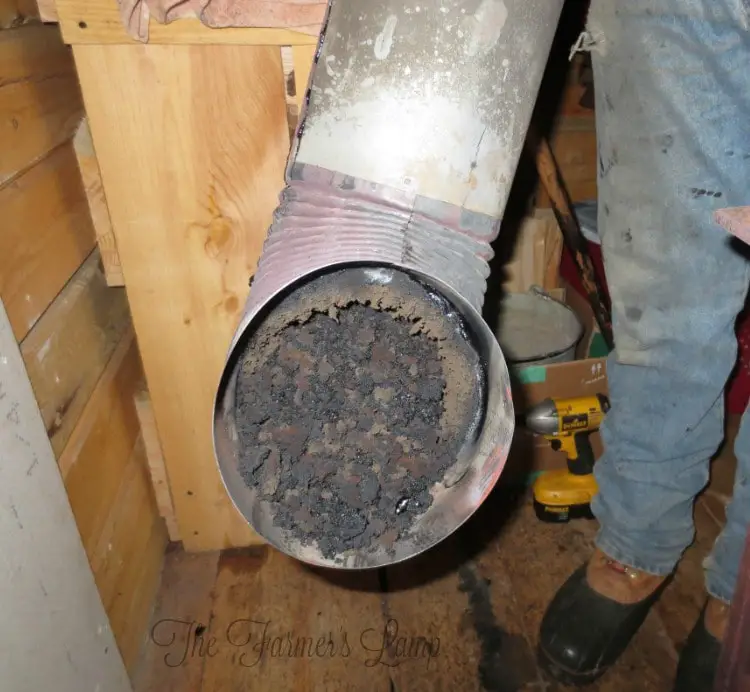
3. Clean Out the Ash
Use a metal shovel to scoop out the ashes. Keep in mind that embers may still be hot so use caution and put ashes into a metal bucket. You may have a riddling mechanism you can use to loosen any ash from the top portion.
4. Scrape Off Any Build Up
Use a scraper or tool that came with your stove to loosen any ash or creosote build-up that has accumulated. Scoop out and remove all debris.
5. Clean the Glass
The heat produced by fire will blacken the glass so a thorough cleaning is needed. Use a glass cleaner to clean the glass. You can also use a newspaper and some cooled ash to get off stubborn heat deposits.
Lastly, check all your openings to be sure nothing is clogged or blocked. Now reassemble all parts. Double-check that everything is in place before lighting your next fire. Note: many people do the chimney last but this progression will prevent having to clean the inside of your stove twice.
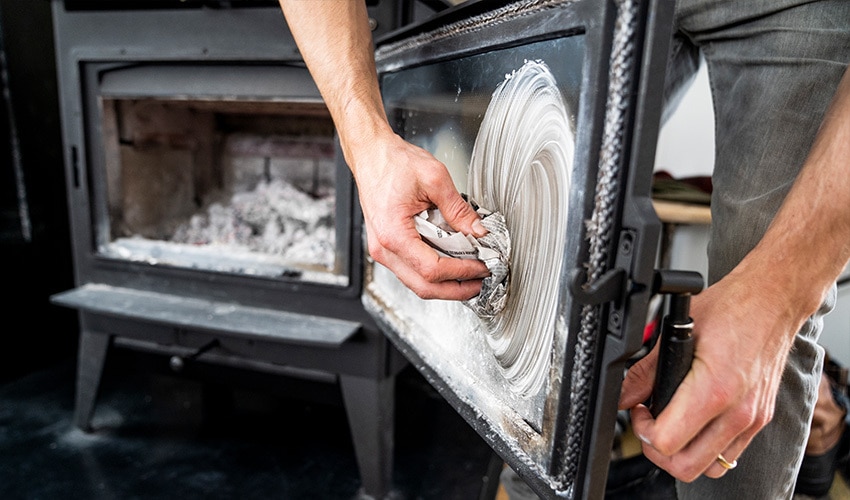
How Often Should I Clean a Stove?
How often you clean your stove will depend on how often you use it. If it is used regularly, like in the winter, you should clean ashes out every 1-3 days with a complete cleaning every 4-6 weeks.
These factors depend on usage and how clean-burning your fuel is. A good rule of thumb is to check for ash build-up every time you light a fire. This will give you a good idea of frequency.
When is it Time to Replace My Stove?
Wood stoves are really made to last so it may be hard to know when to replace. Here are some signs it might be time:
Your Stove is More Than 20 Years Old
Older stoves do not adhere to the same standards as newer ones. To keep yourself and your home safe, you should replace any stove that is more than 20 years old unless you can alter it to new standards.
The Outside is Warping or Cracking
This is obvious. If the stove is damaged, your risk of fire increases significantly. When you notice warping or a cracked stove, it is time for a new one.
It’s Producing Too Much Smoke/Ash/Creosote
A stove that is not operating properly may produce more smoke and not burn your fuel as efficiently. Similarly, if your chimney or flue are caked with more and more creosote, your stove should be replaced.
You Are Using More Fuel Than Ever Before
When you start burning through fuel like it’s going out of style, especially without the benefit of achieving more heat, your stove may just not be working as well as it used to.
Anytime you are not satisfied with your stove after care and maintenance have been performed, you should consider a replacement.
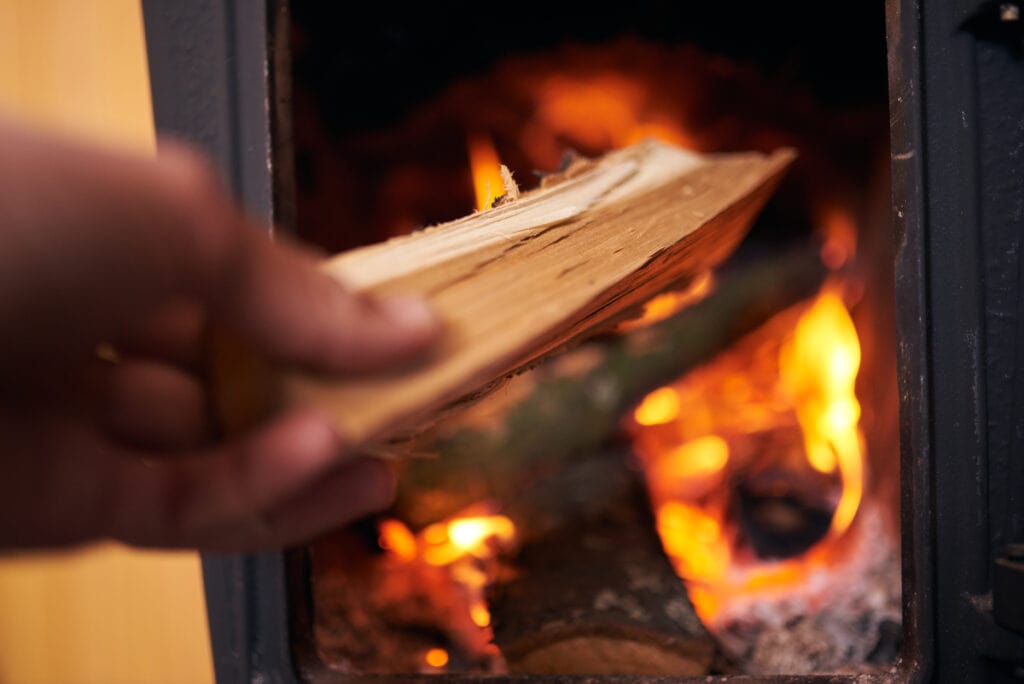
Can You Really Find a Quality Stove That’s Affordable?
There are a few ways to keep your cost down when getting a stove for heating. Decide on your budget and then look into options in your price range.
You may need to heat a smaller, frequented area rather than a larger space. Keeping your expectations in check will help you find a great unit at the right price.
Choosing a stove that holds less fuel is another way to keep the initial cost down. You’ll have to add fuel more often but that’s the give and take. Be sure to consider the cost of the fuel you will use when deciding on a type. No matter what your budget is, you can find a stove to fit as long as you take your time and know what you are looking for.

Conclusion
When looking at stoves to provide heat for your home, there are a plethora of choices from wood stoves with blowers to pellet stoves, stoves for your garage, and even wood stove inserts. No matter what you are looking for, there’s an option out there for you. Hopefully we’ve helped you along your journey. Thanks for reading.
